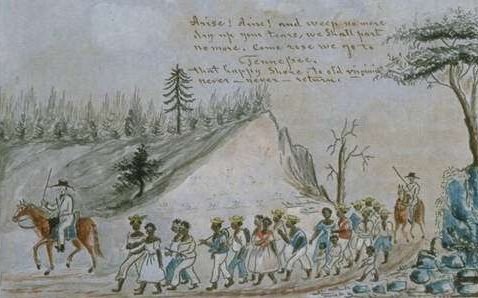
 Original research backed by compelling historical documents reveals that a staggering number of New York City mayors were enslavers or investors in slave ships. Forty-nine men — including acting mayors — served as mayor until New York legally ended slavery in the state in 1827.
Original research backed by compelling historical documents reveals that a staggering number of New York City mayors were enslavers or investors in slave ships. Forty-nine men — including acting mayors — served as mayor until New York legally ended slavery in the state in 1827.
Of those, forty-three (88%) are documented as enslavers or investors in the slave trade. After emancipation there were two mayors involved with slavery, which brings the total number of mayors directly connected to slavery up to forty-five.
An original essay and research on the mayors is available on the Northeast Slavery Records Index website.
The names of eighty-five people who were enslaved by New York City mayors are documented in sales, wills, court cases, petitions, runaway notices, and manumission records.
Twelve mayors are documented investors in thirty-four ships that transported slaves, including every mayor in office from 1726 to 1766.
They mostly invested in ships that sailed to the Caribbean to sell products and buy slaves, but six owned ships that took captives from Africa.

 Mayors presided over the Common Council that enacted slave codes from the earliest days of the colony. However, the persistence of slave codes after the American Revolution has not been explored.
Mayors presided over the Common Council that enacted slave codes from the earliest days of the colony. However, the persistence of slave codes after the American Revolution has not been explored.
In 1784, Mayor James Duane presided as the council passed a law to regulate slaves. And, while the Manumission Society’s lobbying to pass state emancipation laws are well documented, there is new information on how mayors reacted to the power of slave owners.
In 1818, Mayor Cadwallader Colden, president of the society, remarked to the council “by what authority the City Prison is rendered subservient to the authority of slave holders.”
You can read the entire essay by Paul Hortenstine and see the documents at the Northeast Slavery Records Index (NESRI).
About the Northeast Slavery Records Index
Northeast Slavery Records Index is an online searchable compilation of records that identify individual enslaved persons and enslavers in New York and also in the states of Massachusetts, Maine, New Hampshire, Vermont, Rhode Island, Connecticut and New Jersey.
NESRI indexes census records, slave trade transactions, cemetery records, birth certifications, manumissions, ship inventories, newspaper accounts, private narratives, legal documents and many other sources.
The goal is to deepen the understanding of slavery in the northeast United States by bringing together information that until now has been largely disconnected and difficult to access.
This allows for searches that combine records from all indexed sources based on parameters such as the name of an owner, a place name, and date ranges.
The rationale for a project that encompasses New Jersey, New York, and the six states of New England is primarily historical, based on the shifting jurisdictional boundaries of the states involved.
For example, a Massachusetts index, for certain times when slavery existed, would include parts of what is now Maine, New Hampshire and Vermont. The Dominion of New England included Massachusetts and extended into Connecticut, Rhode Island, New York and New Jersey.
New work has been underway in the history of slavery in the North, especially in New York, which celebrates the 200th anniversary of the end of slavery in the state in 2027.
NESRI is supported by the John Jay College of Criminal Justice – CUNY.
Read more about slavery in New York State.
Illustrations, from above: “Slave Trader” showing the internal slave trade between Tennessee and Staunton, Virginia; and “New York Slave Market about 1730.”








Recent Comments